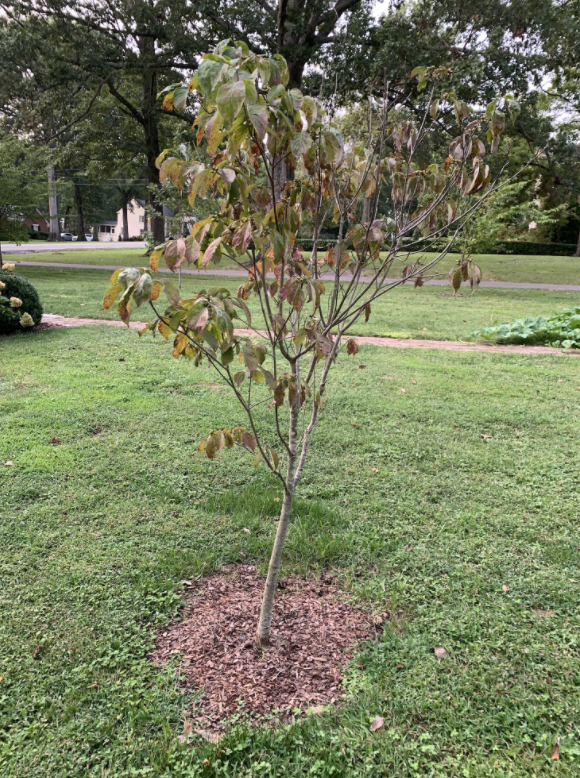What’s Wrong With My Dogwood?
What to Know About Unhealthy Dogwood Trees
One of the main concerns for Nashville homeowners who have dogwood trees is a fungus called anthracnose, which causes a treatable disease also known as dogwood blight. If you have noticed changes in the color of your dogwood leaves that started in late summer — like browning, yellowing or brown-spotting — your tree might be infected. But don’t give up hope! Your dogwood may look bad, but if you treat it in time, it will usually survive.
What Is Anthracnose?
This common fungal disease thrives on leaves, both on the tree and on leaves that fall to the ground. It can also infect a tree’s trunk, branches and twigs.
Michael Davie, certified arborist and NTCC board member, explains, “When anthracnose was first noticed in dogwoods in the 1970s, people were worried the trees would be wiped out. Most native dogwoods didn’t have resistance to it, and it killed a lot of them.”
Some species are somewhat resistant to anthracnose, however, and those can be impacted but not killed by the disease. The main problem is with the infection of foliage. Not only does it look bad, if it persists for several years, it can severely interfere with the tree’s health.
Mature dogwood with anthracnose
Is My Tree Susceptible?
Young trees are typically the most affected, but mature ones can be vulnerable as well. Dogwoods are sensitive to harsh environmental conditions, and like any tree, without enough water (or too much), they’ll become stressed and susceptible. Davie says wetter conditions encourage the fungal infection. “Leaf fungal problems worsen in damp, shady environments that make fungi happy. When people have the trees out in the open, it’s not as big of a problem because the leaves can dry more easily.”
Even though dogwoods are shade-tolerant understory trees, they like sunny patches. They’re even able to grow in full sun as long as they’re kept watered.
This young dogwood should survive until next year despite its bedraggled appearance in early fall.
What Can I Do?
Many of the dogwoods planted today are resistant to anthracnose, but not all trees will be. If you noticed an infection in your dogwood this summer, the best thing you can do is keep the tree from becoming more stressed. Making sure it gets enough water and isn’t damaged by weed eaters or mowers will keep your tree in good condition until you’re able to apply a fungicide the following spring.
Trees that are already infected with dogwood anthracnose can’t be treated immediately. “Leaves on the trees start in spring and are there all year. If they’re infected, the fungus will stay until the leaves drop,” Davie explains.
Although he usually encourages people to allow leaves to hang around in the fall, Davie says it’s a good idea to remove and dispose of leaves infected with anthracnose or other fungal diseases. Leaves can be bagged and left at the curb for Metro’s quarterly brush and yard waste collection. This prevents fungal spores on the fallen leaves from reinfecting the trees, so be sure to rake leaves of affected dogwoods soon after they fall.
Leaf spots and blotches like these are signs of dogwood anthracnose, a fungal disease.
Keep an Eye on Your Tree’s Condition
If your dogwood seems to be dropping its leaves this fall earlier than other trees, that’s not a problem. Dogwoods are “early to bed and early to rise trees.” They normally lose their trees early in fall and will be among the first trees to leaf out in spring.
But there are a couple of other threats that dogwood owners should watch out for: the dogwood borer, a moth whose larvae infest dogwood’s branches, and powdery mildew, another common fungal disease. Davie advises watching for dead patches on branches and for a white powdery substance on the tree’s leaves. Ask your certified arborist, or reach out to us at the Nashville Tree Conservation Corps, if you have concerns about the appearance of your tree.
For regular information on tree care in Nashville, sign up for our email newsletter!



